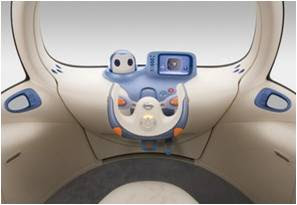
Inventor:
John Barrie and Dr Norbert Muller, United States
The Story:
Dr. Norbert Muller, Michigan State University Mechanical Engineering Professor, and John Barrie of John Barrie Associates Architects were awarded a cool $30,000 prize for answering an open innovation challenge to design a new era of room air conditioners with a significantly reduced carbon footprint.
The challenge was called the Boston Innovation Prize and was set by the Barr Foundation, a private foundation that aims to improve the quality of life of people in the Boston area, and the Cambridge Energy Alliance, an organization that aims to reduce the carbon footprint of Cambridge, Massachusetts. It was submitted to the global open innovation marketplace via the InnoCentive website. The nature of the task in hand was this: “to radically improve efficiencies in space cooling and dehumidification” and to “identify breakthrough technologies and/or designs which will provide cooling and dehumidification with dramatically higher energy efficiency than current room or window air conditioning units, while maintaining affordability.”
Impressive Solution……
http://sustainabledesignupdate.com/2009/12/energy-efficient-air-conditioning/

















